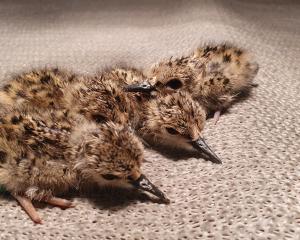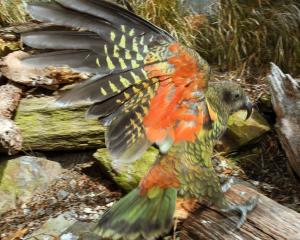It was the last remaining mature wilding pine to be cut down in the area and both Mr Bolton, a Department of Conservation programme manager for threats, and threats ranger Peter Willemse had been looking forward to "nailing it"'.
From 1954 until 1960, the upper catchments of Potato Creek and the Kirkliston Stream were planted with thousands of trees in a bid to slow down erosion, under the supervision of the Waitaki Catchment Commission.
Of some 20,500 recorded plantings, 9200 were Pinus nigra (Corsican pine) and 5600 were Pinus contorta, with the balance comprising other native and exotic species.
The Lands and Survey Department originally took control of the trees and it was later taken over by Doc.
It was not until about 2000 that sufficient funding was obtained to make any inroads. Until then, matters had fluctuated between making progress and losing ground, Mr Bolton said.
"From that point on, we saw progress being made - we were winning," he said.
When Mr Willemse came to Twizel in 2005, he took one look at the Kirklistons and it reminded him of Tank Creek at Mid Dome, between Athol and Lumsden "and I knew exactly what was going to happen if we didn't win it", he said.
In that area, there was now a spread of wilding trees across about 45,000ha. Seed had blown as far away as 30km and trees were growing.
So from mistakes made in the past, Mr Willemse knew exactly what needed to be done and he knew a successful outcome could be achieved, if the project continued to be adequately resourced.
But it needed to be attacked in a strategic fashion, knowing where to move next.
About $1.2 million had been spent over the 8500ha conservation area and "millions" of trees had been felled. Maintenance work is under way.
The removal of wilding trees was rewarding because it had such a visual effect.
"You can make a start and five years on I can see a significant change," Mr Willemse said.
It was different from animal control where you could have a lot of effect but the results were not apparent, change was not visible and recovery could take decades.
"You know you've made a difference," he said.
As the two men stood on a track near the last stand of trees to be felled, they pointed out that the same spot was forest five years ago. Branches had to be cut off trees to prevent the sides of vehicles being damaged.
Recovery of tussock and other vegetation in the area had been "awesome", Mr Willemse said.
Vegetation recovery was also aided by wallaby control in the area.
The next major area to be targeted for wilding tree control is the Ben Ohau mountain range, near Twizel.




